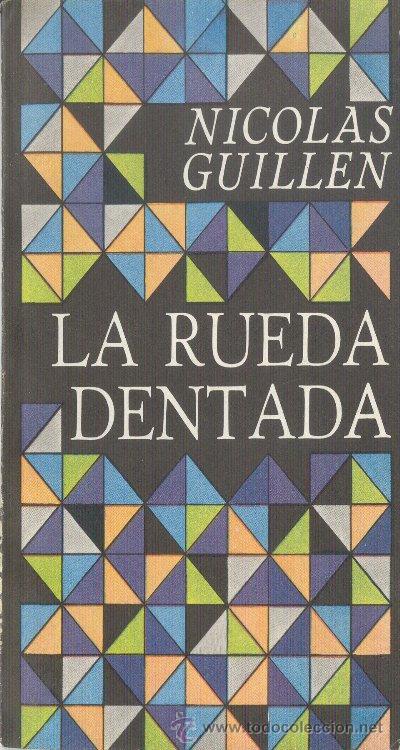4.1.1.14.11 “The Cogwheel”, text published by Nicolás Guillén in 1969

The poetry collection “The Cogwheel” by Nicolás Guillén returns to the historical roots of slavery but also has some critical nuances regarding its immediate reality, which he takes care to strip away all kinds of stereotypes and present as is with a subtle irony.
The text includes the excellent piece “I Say That I Am Not a Pure Man,” in which he claims the authenticity of being, also in an individual sense, above political creeds, and attacks the “pure,” which could be read in the sense of “the absolute,” which could establish absurd dichotomies in society or impose unattainable models.
This text now speaks from a higher social plane, in which the basic questions that motivated his previous poetics have been resolved and the dilemma is now of a moral nature, the being can now “be” from the point of view of the material conditions of existence and begins to ask how to be, how to affirm oneself in a context in which, without denying its contributions to the dignity of man, the collective conditioning of individual behavior had become somewhat oppressive.
N. Quintana considers the text a “true proclamation in favor of vital plenitude in the face of moral conventions and dogmas.”
The book is made up of several sections, highly versatile in terms of themes but without abandoning the connection from the historical past to the present that was most immediate to it, with a always humanistic projection, with hints of irony but betting on a bright future, from the profound knowledge of life on earth, as a lyrical apprehension, one of the forms of understanding reality.
It is also dedicated to such an important sphere of Cuban culture as the plastic arts, with approaches to the pictorial features and ethos of four figures whose creations had been inscribed in the endless flow of national pictorial art: Calor Enríquez, Víctor Manuel, Eduardo Abela, Amelia Peláez and Fidelio Ponce.
This work ultimately constitutes the testimony of a new sense of feeling that could only emerge from the satisfaction of the spiritual needs that had driven his previous poetics, in his case from a path of social commitment he had never abandoned. His poetic voice, if heard—and it was to some extent—could contribute to a truly revolutionary path, turning back on itself in spirals of change whenever necessary.
In this sense, his song to the death of Che, although it reflects a collective sensitivity, also contains his vital Americanism and a revolutionary position akin to the “Heroic Guerrilla”:
“Not because you have fallen
your light is less high.
A horse of fire
hold your guerrilla sculpture
between the wind and the clouds of the Sierra.
You are not silent because you are quiet.
And not because they burn you,
because they hide you underground.
because they hide you
in cemeteries, forests, moors,
They’re going to prevent us from finding you,
Che Commander,
friend.
(…)
Cheers, Guevara!
Or better yet from the American depths:
Wait for us. We will leave with you. we want
die to live as you have died,
to live as you live,
Che Commander,
friend.”








